BRITISH MUSEUM |
Tells the story of human history all the way from its humble beginnings, to today's latest stories
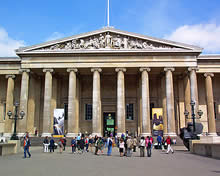
Photo © juandesant (CC)
Advertisement
Commentary |
Select arrow to play/pause, bar to rewind/forward
Highlights |
Great Court
Reading Room
Egyptian Mummies
Lindow Man
Parthenon Sculptures
Rosetta Stone
Sutton Hoo Ship
Elgin Marbles
Visitor Information |
The British Museum is open daily 10am to 5:50pm, open late Thursdays and Fridays. Entry is FREE.
Scrapbook |
The
British Museum aims to tell the story of human history, all the way
from its humble beginnings, to today's latest stories. It is the oldest
public museum in the world and nearly five million visitors a year come
to inspect the 13 million artefacts, covering all the continents. The
building itself is an architectural landmark in its own right, first
opened back in the 1750s. In the intervening years between then and
now, it has gone through several expansions.
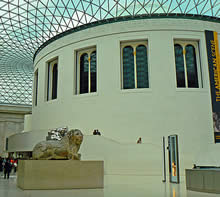
In 2000, Queen Elizabeth II opened the Great Court, a central linking point for the museum, with a striking glass roof.
Did You Know?
Famous users of the Reading Room include Karl Marx, Oscar Wilde, Mahatma Gandhi, Rudyard Kipling, George Orwell, George Bernard Shaw, and H. G. Wells.
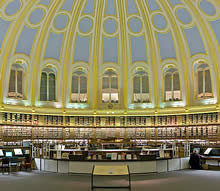
At the centre you will find the British Museum Reading Room, housing books covering history, art and travel.
Photo © Diliff (CC)
Objects
in the museum stretch as far back in history as two million years ago
and the collection is split broadly by geography. The Egyptian antique
collection is the largest outside Cairo, the Mesopotamian antique
collection is the largest outside Iraq, and the collection of prints
and drawings is one of the three largest in the world.
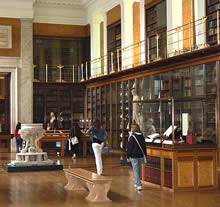
Exploring the British Museum
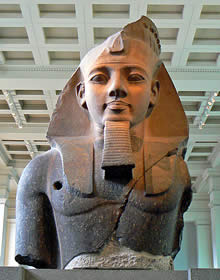
Ramesses II 1250 BC
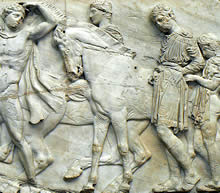
The Parthenon Sculptures;
detailed relief marble sculptures dating from the 5th Century BC. They
were brought back to England by Lord Elgin from the Parthenon, Athens.
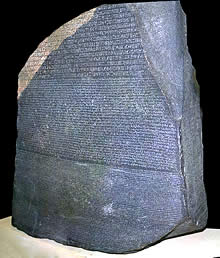
The Rosetta Stone
is a granite tablet, dating from the 2nd Century BC, that was
instrumental in advancing modern understanding of Egyptian hieroglyphic
writing.
Photo © Hans Hillewaert (CC)
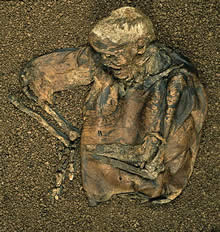
The Lindow Man
is a 2,000 year old body of a man, well preserved in the peat bogs of
Cheshire; found in 1984, scientific analysis has shown his last meal
was cereal with some mistletoe, indicating his death was an elaborate
ritual.
Source WikiMedia (PD)
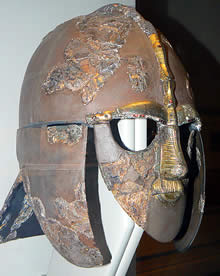
The
Sutton Hoo Ship, was the burial chamber of a anglo-saxon king, found in
East Anglia in 1939 and containing many treasures including the
magnificent ceremonial helmet on display.
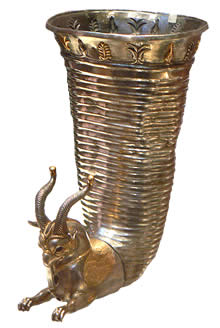
Persian 5th century BC drinking horn
Did You Know?
The museum has come under some criticism in recent years, from
organisations who support the right of countries to own objects related
to their history. Several countries have sought the return of items on
display at the British Museum, including paintings, gems, and gold, to
countries such as Egypt, Wales, and Nigeria. Some items have been
returned as requested, but the museum points out that if every artefact
was returned to its site of origin, it would mean the emptying of every
museum in the world.
The museum's foundations lie in the will of the physician and naturalist Sir Hans Sloane
(1660–1753). During the course of his lifetime Sloane gathered an
enviable collection of curiosities and whilst not wishing to see his
collection broken up after death, he bequeathed it to King George II,
for the nation, for the princely sum of £20,000. Throughout its lengthy
history, the museum has kept intact its fundamental beliefs – that its
collection should be freely accessible to the public, and that all
human cultures should try to understand one another. With a broad
collection of artefacts, and free admission, those ideals are certainly
part of the museums modern identity.
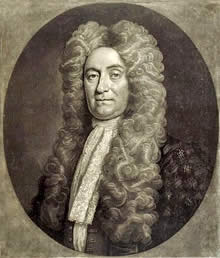
Sir Hans Sloane, who left his personal collection to the nation on his death in 1753 and so began the British Museum
Source WikiMedia (PD)
Did You Know?
When the museum opened in the 1700s, entry was only permitted to
“studious and curious persons” - You could only go in if you were
willing to learn!
All
logos are registered trademarks and copyright their owners. Items
marked (CC) are licenced using a Creative Commons licence by-sa. Items
marked (PD) are in the public domain and sourced from WikiMedia. All
other content is Copyright Pocket Places Ltd, unless stated otherwise.
